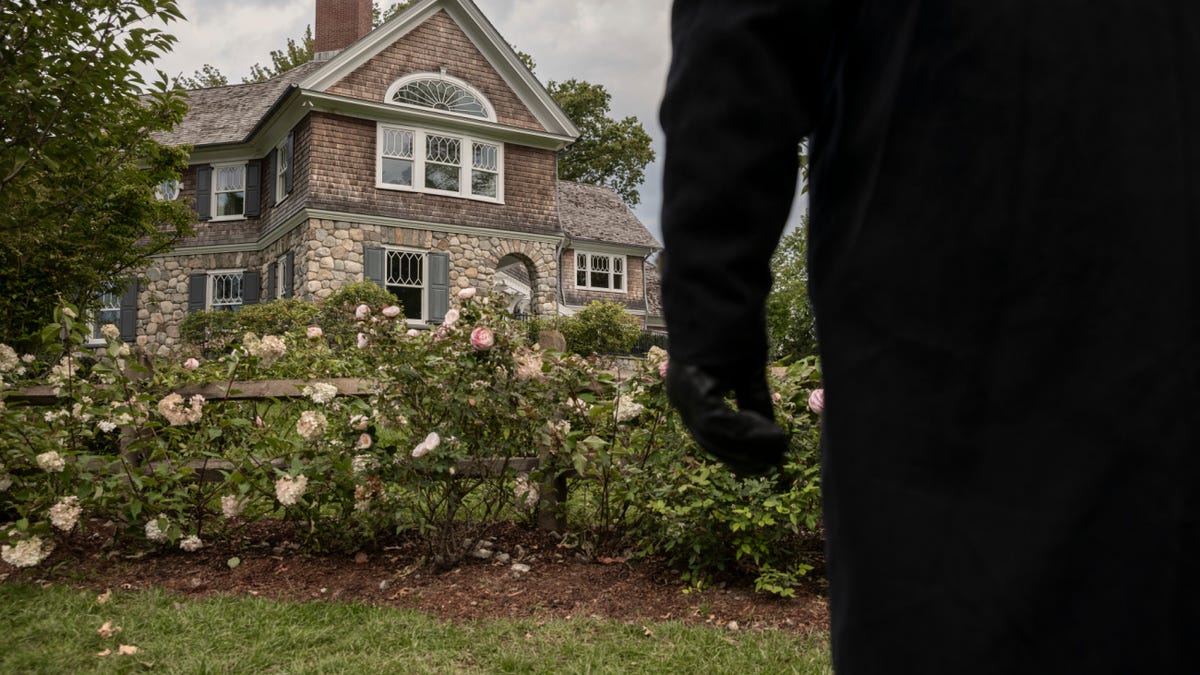 Why You Can Trust CNET
Why You Can Trust CNET 'The Watcher' on Netflix: The Real Story Behind Those Ominous Letters
A New Jersey family really did receive chilling letters after purchasing a new home, but Netflix made up a lot of details.

Someone really didn't want the Broaddus family to move into a New Jersey house.
Netflix thrilled The Watcher has been making headlines as viewers dig in to its seven unnerving episodes. Naomi Watts and Bobby Cannavale star as the Brannocks, a couple based on the real-life Broaddus family. They buy a beautiful sprawling home in Westfield, New Jersey, but start receiving creepy letters signed only "The Watcher." The crime series is based on an article about the Broaddus' ordeal published in New York Magazine's The Cut.
But unlike some Netflix crime shows, such as Dahmer -- Monster: The Jeffrey Dahmer Story, this one ends with no satisfying guilty party. Let's unwrap the case.
Warning: Spoilers for The Watcher ahead.
The Watcher basics
Derek and Maria Broaddus bought the home at 657 Boulevard in Westfield in 2014 for $1.3 million. Almost immediately, they received the first of a number of very weird and threatening letters. The letter writer knew the names of the family's three kids and referred to them as "young blood," and the note was signed "The Watcher."
The new owners talked to the couple who'd sold them the house and learned that couple had received one letter just before moving out, and had dismissed it and thrown it out. But more creepy letters arrived, including one that asked, "Have they (workers renovating the house) found what is in the walls yet? In time they will." And the letters made it clear the writer was close enough to hear Maria using the children's nicknames, and to spot an easel on an enclosed porch.
Long story short: Everyone in the neighborhood becomes a suspect, and the family tries, with the help of police, private investigators and more, to figure out the identity of The Watcher.
Who is 'The Watcher'?
To this day, The Watcher remains unidentified. But the last episode of the Netflix series starts fictionalizing like crazy. First, the show invents a private detective, Theodora Birch (Noma Dumezweni), and has her confess to being The Watcher on her deathbed. The family learns at Theodora's funeral that she just made this up to give them some closure. None of that happened, and no one knows who The Watcher is, or why they did what they did.
The show took liberties with the truth
In the show, a real estate agent named Karen Calhoun (Jennifer Coolidge) sells the Brannocks the house. (Zillow even has a fake listing page where Calhoun advertises the house.) Then, in the final episode, she herself buys the house, and is immediately stalked in person by a hooded watcher (dog lovers, skip this episode). That also didn't happen. (No real pets were killed in the actual Watcher case.)
There's a character in the show, John Graff, who the show sets up as having once lived in the house. He's based on family murderer John List. List did live in Westfield, but not at 657 Boulevard. It appears showrunners Ryan Murphy and Ian Brennan just couldn't resist slipping the town's most infamous resident into their plot.
Naomi Watts and Bobby Cannavale buy a beautiful house, but never get to enjoy it.
The letters
The letters are obviously the biggest clue. Reeves Wiedeman, the New York Magazine reporter whose story is the basis for the series, talked about them to New York's Vulture.
How many letters?
There were three letters threatening the new owners. A fourth came much later and seems possibly a copycat -- it's angrier, Wiedeman says, and more focused on the Broaddus family's hopes to tear down the house and build two on its large lot. It appears two other homeowners in the neighborhood received one Watcher letter each, but theirs were more admiring of their homes, not threatening.
The DNA
A 2015, DNA analysis reports that a woman licked the envelope on at least one of the letters, though it could be that The Watcher asked someone else to seal the envelope. The police have not found the source of the DNA, but have said it wasn't the female owner of the house.
In an update to the New York Magazine article, Wiedeman says the prosecutor's office asked neighbors to voluntarily give DNA samples to be matched against the envelope DNA. The Broaddus family was told no one who gave DNA matched, but Wiedeman points out that not everyone in the neighborhood was tested. The article also says the family offered to pay to have the DNA uploaded to a genealogy database and traced that way, but the prosecutor's office refused.
The handwriting
Wiedeman hopes a show viewer will identify the distinct handwriting on the envelopes of the letters. The letters themselves were typed, with the signature typed in a different font than the body of the letters. No useful fingerprints were found.
The family today
The Broaddus family didn't get very involved with the show, except to request that Netflix make the fictional family unlike their own, Wiedeman says. So their last name, number and ages of kids, and other details were changed. The family wasn't moving to the suburbs from New York City, as depicted in the show, for one thing. They were already living in another house in Westfield.

